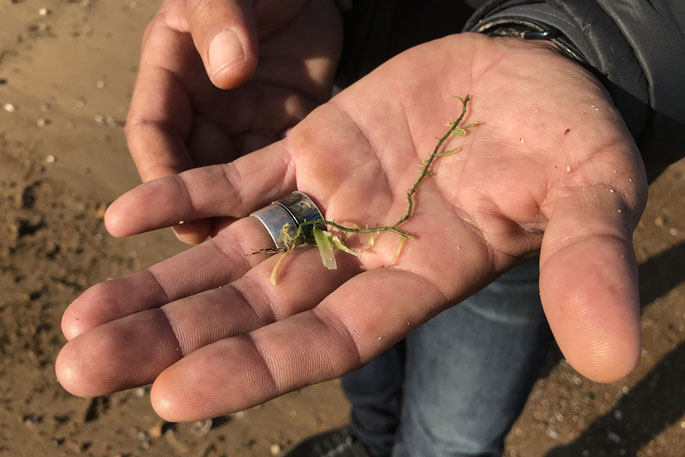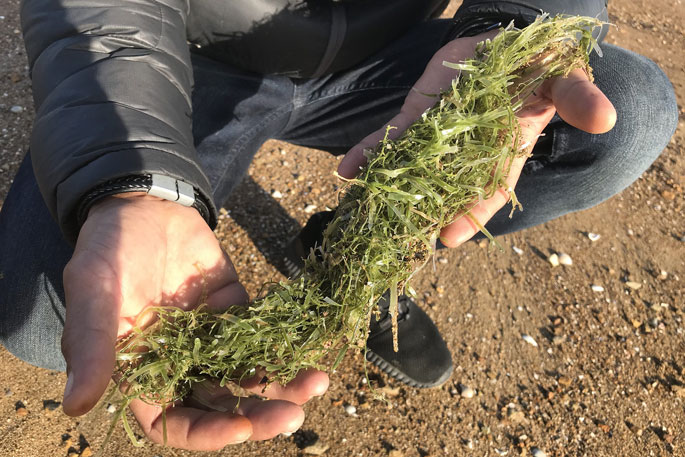Seven North Island councils representing more than half of New Zealand's population are calling on the government for more money and support to be thrown at one of the world's worst invasive marine seaweed pests, recently discovered in the Bay of Islands.
Northland, Whangārei, Auckland, Bay of Plenty, Waikato Regional, Hamilton and Tauranga councils are seeking more money and support from the Government to fight the 'foot and mouth” of invasive marine seaweeds.
The seven councils form New Zealand's heavyweight Upper North Island Strategic Alliance - their combined area producing more than half of the country's GDP.
It has taken the unusual step of sending a strongly-worded letter about caulerpa to Minister for Biosecurity Damien O'Connor, Northland-based Minister of Conservation Willow-Jean Prime and Acting Minister Oceans and Fisheries David Parker - calling for better resourcing in what they say is a marine pest unconcerned with regional boundaries.
More than 70 per cent of New Zealand's marine vessels are found along the alliance's coastlines.
'On behalf of … UNISA I am writing to express our utmost concern regarding the recent detection of the invasive seaweed caulerpa in the Bay of Islands,” Bay of Plenty Regional Council chair Doug Leeder says in a letter from the councils to the Government this week.
'This is not just an issue for Northland beaches and recreational fishing, it's a New Zealand Inc issue,” says Leeder.
'(Exotic) caulerpa species pose a significant threat to our precious marine environments and standing back and allowing further spread is untenable to our communities.”
 Small piece of caulerpa in the Bay of Islands.
Small piece of caulerpa in the Bay of Islands.
Northland Regional Council biosecurity working party chair Geoff Crawford says at least $100 million is needed in the first instance towards sorting out the new Bay of Islands discovery.
Mainland caulerpa was first discovered by mana whenua in Omakiwi Cove on May 3 in a mainland New Zealand first.
Ministry for Primary Industries and local mana whenua are days away from the start of banning anchoring and kaimoana gathering around Omākiwi where 16 hectares of the weed has been confirmed in the last week.
'We understand that caulerpa appears to be well established at Omakiwi Cove and poses a significant risk as a source for further spread throughout the upper North Island and the rest of New Zealand,” says Leeder.
'We wish to acknowledge the recent change in attitude from Biosecurity New Zealand in taking a more proactive stance towards exploring options for managing caulerpa and strongly encourage you and your Government to ensure they are adequately resourced to effectively contain this challenging pest.
'This new detection represents a significant range expansion from the previous known sites of Aotea (Great Barrier Island) and Ahuahu (Great Mercury Island).”
Leeder says more surveillance was needed to see if caulerpa had spread along the mainland coast.
'The incursion of this type of organism poses potential risks to biodiversity in the marine environment.”
Leeder says the alliance's seven councils did not have the funding to 'get this thing under control”.
The Government's Ministry for Primary Industries is running the caulerpa response nationally through its Biosecurity New Zealand arm.
'The upper North Island regional and unitary councils are willing to ‘lean in' to support management attempts but we can't do this alone, especially given regions have no authority to manage inter-regional movements,” says Leeder.
He says other areas in New Zealand could take the lead from the caulerpa efforts in Northland, Great Barrier and Great Mercury Islands.
'As sea temperatures rise, like they have done in the last couple of years, there's more likelihood of this incursion spreading south.
Crawford says eradication remains NRC's main focus when it comes to the pest in the Bay of Islands.
The invasive superspreader seaweed was found in almost 20 per cent of the locations urgently checked by NRC and NIWA divers in the week leading up to a landmark May 31 Te Rawhiti marae Bay of Islands caulerpa hui.
 Te Rawhiti's Rana Rewha (Ngati Kuta)first found pieces of caulerpa on this Omakiwi Cove beach on May 3 in New Zealand's first confirmed mainland infestation.
Te Rawhiti's Rana Rewha (Ngati Kuta)first found pieces of caulerpa on this Omakiwi Cove beach on May 3 in New Zealand's first confirmed mainland infestation.
Crawford says it was frustrating MPI had not had a proactive plan in place in advance of caulerpa being found to have spread beyond its Great Barrier Island stronghold to the Bay of Islands.
It was now more than a month since it had been discovered in the Bay of Islands and the Government ban on anchoring in Omakiwi was not yet in place.
What to do if you find caulerpa:
Take a photo, record the location and call 0800 80 99 66 or visit www.report.mpi.govt.nz
If finding caulerpa on anchors when boating, people are encouraged to throw it straight back in the water- before they move from their anchorage.
If caulerpa is found on gear once already back at shore, put it in the rubbish on land.
For latest caulerpa information www.biosecurity.govt.nz/caulerpa
-Public Interest Journalism funded through NZ On Air.




0 comments
Leave a Comment
You must be logged in to make a comment.